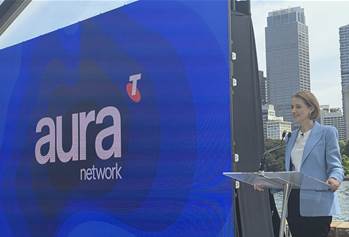Telstra’s enterprise revenue has taken a hit despite consistently being one of the few growth segments within Australia’s largest telco.
Revenue for Telstra Enterprise fell 1.8 percent to $3.88 billion for the first half of the 2020 financial year, spanning 1 July to 31 December 2019, compared to the first half of FY19.
The telco pinned the middling results for Enterprise on a 5.1 percent decline in domestic revenue, which offset the 9 percent growth from international revenue thanks to higher margin data & IP products.
While consumer and small business still makes up the bulk of Telstra’s overall sales, the Enterprise business remains a significant segment for the telco and CRN readers as it encompasses Telstra’s Network Applications and Services (NAS) business.
NAS is another typically high-performing division, however revenue was relatively flat in the half-year, dipping by one percent to $1.58 billion. The largest product category within NAS, industry solutions (which includes NBN commercial work) fell 11.3 percent to $508 million by virtue of the national network nearing completion. That being said, Telstra claimed NAS would have grown by two percent if it had not been for NBN commercial work drying it.
Unified communications came close to topping industry solutions in revenue, rising 13.3 percent to $501 million. Telstra said this growth reflected new services and migrations particularly for small businesses.
Other products under the NAS umbrella included cloud services growing 7.4 percent to $217 million, managed network services falling 6.9 percent to $271 million, and integrated services dipping 5.7 percent to $83 million.
While NAS sits within the Enterprise umbrella, Telstra revealed that small businesses accounted for $174 million of NAS sales, compared to $1.16 billion for enterprise customers.
Telstra CEO Andy Penn revealed that the company has made strong progress rationalising the products on offer to Enterprise customers by 23 percent since FY18 to 499, and is on track to reach 50 percent reduction by FY21.
Overall results
Overall, Telstra’s income dipped 2.8 percent to $13.4 billion for the half-year, while net profit fell 6.4 percent to $1.2 billion.
Underlying EBITDA also took a 6.6 percent hit to reach $3.9 billion, though without NBN headwinds, Telstra says underlying EBITDA would have grown by another $90 million, the first time it would have grown since FY16.
The first half of FY20 marks the halfway point of Telstra’s T22 strategy, the company-wide program unveiled in June 2018 to modernise and simplify the business and plug a $3 billion earnings hole that will be left in the wake of the NBN’s completion.
Penn revealed that in the first half of FY20 alone, the company has brought down its underlying fixed costs by $422 million, bringing total cost reductions to approximately $1.6 billion since FY16.
“We know that there is more work to do and we still face challenges within our business and across the telecommunications sector. However, our T22 strategy gives us a detailed understanding of what we need to achieve and how we will get there.”
“Our resolve is to focus on the things that are within our control and it’s particularly pleasing to see a continued strong performance on reducing our costs and delivering new and simplified products and services to our customers.”
Telstra’s core mobile business was also relatively flat, growing just 0.3 percent to $5.3 billion as a result of $202 million in hardware growth being offset by declines in services revenue. Another 137,000 retail postpaid mobile services were added in the six-month period, while another 173,000 pre- and post-paid and IoT wholesale services went live.




_(11).jpg&h=142&w=230&c=1&s=1)





.jpg&w=100&c=1&s=0)
_(8).jpg&w=100&c=1&s=0)







.jpg&q=95&h=298&w=480&c=1&s=1)





